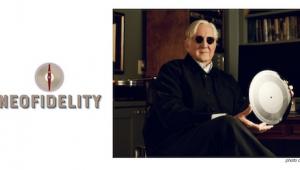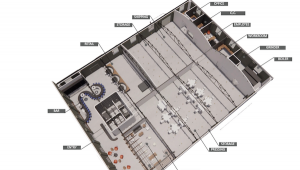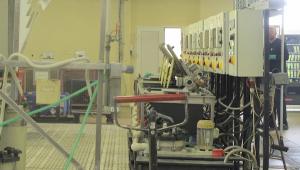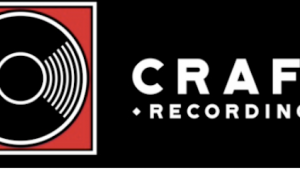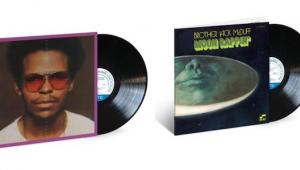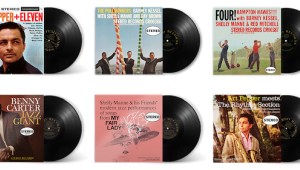Marantz Launches NA-11S1 Reference Class Network Audio Player and USB DAC

Eindhoven, The Netherlands, March 28th, 2013—Marantz gathered a select group of audio journalists at its European headquarters to announce the launch of the new Premium Range (MSRP $3499) NA-11S1 Network Audio Player/DAC.
The daylong event included a technical presentation by Rainer Finck, former Philips digital engineer and now Boston Acoustics European General Manager, and from Ken Ishiwata, Marantz’s “Brand Ambassador” and unofficial keeper of the company’s “audiophile flame,” a detailed company history along with a backgrounder on his involvement in the finalizing of the NA-11S1’s design.
Following lunch, attendees were treated to a listening session in Mr. Ishiwata’s playground: an impressively large and well-treated sound room. The listening session reinforced the commonly held belief that he is among the most skilled set-up and demo hosts in the business.
The end of “packaged media” is in sight Ishiwata averred, backing up his statement with a series of convincing graphs and charts displayed upon a big screen showing CD sales trending down. The new Network Player is Marantz’s latest and most ambitious response to the trend, though it is also rolling out the new SA-11S3 SACD player, one reason being that disc sales in Japan have not fallen as they have in other markets and SACD player demand still exists, though at some point streaming DSD will put a crimp on that market as well.
Full Featured and Future Proof
The new Network Audio Player’s RJ-45 LAN port supports advanced Internet streaming via your home network giving you access to almost limitless Internet radio choices, some of which now sound quite good, depending upon the bit rate, as well as to music subscription services like Pandora and Spotify. The inclusion of Apple’s Airplay lets you stream wirelessly at full resolution iTunes music from your computer as well as from your iPhone, iPad or iTurntable (iWish). iPhone and Android apps give you full control from your phone or iPad.
Front and rear USB ports allow you to connect thumb drives and Mac and PC computers to play high resolution PCM (WAV, WMA, MP3, MPEG-4, FLAC and ALAC as well as FLAC HD 192/24 and WAV 192/24) and DSD files you’ve created yourself or downloaded from the Internet. You read that correctly: the NA-11S1 incorporates the latest DSD chipset that allows true DSD streaming and playback via USB. It also includes a SPDIF input. The front USB port also features automatic iPod detection and charging even in standby mode. Optical and coax digital outputs allow connection to other components. A high quality dedicated headphone amplifier with analog volume control adds to the Network Audio Player’s versatility.
What the NA-11S1 does not include is video. The unit is intended for insertion into a high performance two-channel audio system, not a home theater. Mr. Ishiwata said dealers, when surveyed, were adamant that video not be included. He said he was relieved because the noise problems produced by video circuitry are even more difficult to isolate than the ones associated with USB—even asynchronous USB— that the NA-11S1 incorporates.
The problem is that while transformer-coupled Ethernet connectivity is inherently isolated and noise-reducing, the USB standard includes a 5V power function that unless carefully isolated, can introduce high noise levels. In fact, Ishiwata was so unhappy with the proposed production sample’s isolation scheme, he rejected it. That pushed the project back from it’s initial October, 2012 launch until now.
The new media player/DAC also incorporates Marantz’s unique oversampling, noise shaping and dithering process that increases quantizing depth to up to 48 bits (depending upon the input signal’s resolution). The algorithm-based process, which Marantz calls “Marantz Musical Mastering” is best discussed in the context of a full product review.
Build quality inside, including a copper clad chassis, appears high per Marantz’s traditional standards. The beefy power supply features a well-shielded high current toroidal power transformer with multiple oxygen free copper (OFC) secondary windings housed in a copper-plated enclosure.
The fully balanced analog section features Marantz’s HDAM-SA2 and HDAM modules, while capacitors and other components were chosen based upon extensive listening tests conducted by Mr. Ishiwata who pointed out that a series of copper topped capacitors that looked great were replaced by some nichicon silver topped ones that sounded better.
To the Listening Room
After lunch we had a good listen to the NA-11S1 via a series of files played through a system consisting of an SC-7S2 preamplifier and a pair of MA-9S2 monoblock amplifiers driving a pair of modestly priced (circa $2500/pr) Boston Acoustics M350 loudspeakers (Boston Acoustics and Marantz are both part of D+M Group [formerly D&M Holdings] the company that also owns Denon and recently divested itself of McIntosh).

We also listened to LPs on Ishiwata’s vintage Marantz turntable fitted with a custom SME-V tonearm and Ikeda cartridge made especially for him by Mr. Ikeda..
Well-recorded files included 192/24 and 96/24 bit resolution ones that sounded quite good but all agreed the best digital sound came from an analog tape-to-DSD transfer. It wasn’t even close. It was the only one that produced a credible, involving, three-dimensional soundstage and a sense of space that made you want to look as well as listen..

A female singer and her piano sounded “in the room” as did the pictures produced by the two vinyl selections Ishiwata played for us. Finally I inserted a thumb drive into the front of the NA-11S1 and played a few 96/24 files made from the Continuum turntable/Lyra Atlas cartridge/Ypsilon VPS-100 phono preamp and everyone heard what that was about, particularly on the Richard Thompson tune “The Angels Took My Racehorse Away.” The modestly priced Boston Acoustics speakers had no business sounding that effortless and reasonably well-extended—particularly in the very large space.
Another trip highlight was the wall of vintage Marantz gear and the vintage pieces on display in the presentation room along with the new 60th anniversary “Consolette”, this time an iPod dockable stand-alone unit with speaker system featuring a “V” shaped genuine wood support and design elements lifted from the company’s iconic products.

60 Years of Marantz
While the “future-proof” product launch was impressive both technologically and sonically, Ken Ishiwata’s oral history of Marantz—made more compelling by his long association with the brand— was one of the trip’s high points, especially his insight that, coincidentally or not, the company changed hands during technological upheavals.
The new Network Audio Player embodies Marantz’s legacy of sonic excellence and digital audio leadership.The brand began, Ishiwata recounted, with one of audio’s biggest technological advances: the introduction in 1948 of the LP (“long play” 33 1/3rpm) record that had both greater storage capacity and far better fidelity than did the SP (“standard play” 78rpm) record.
The introduction of the LP inspired Saul B. Marantz to build for himself a monophonic preamplifier incorporating various equalization curves then used by record companies before RIAA equalization became the industry standard. It so impressed those who heard it, he began hand-assembling in 1952 100 “Audio Consolette”s that quickly sold, leaving a backlog of orders he himself couldn’t possibly fill. The forward-thinking Marantz even included a “TV” input!
Mr. Marantz created the Marantz Company in 1953, built a factory in Woodside, Queens, New York and in 1954 introduced the Model 1 preamplifier, a commercialized, upgraded version of the “Audio Consolette”. The legendary designer Sidney Smith, a military trained electrical engineer, joined the company and soon thereafter Marantz introduced the Model 2 power amplifier.
The next big technological shift came in 1958 with the introduction of the stereo LP. Marantz introduced the Model 7 preamplifier that quickly became a legend. It is still a much sought after piece that can sell for tens of thousands of dollars.
Here’s where the young Ken Ishiwata, then living in his native Japan, enters the picture. A friend’s father played for him a Julie London record using a Marantz 7C (the "C" is for "wood case" not a different model) and instantly Mr. Ishiwata’s life forever changes. He had never heard such sonic purity and such realistic sounding vocals.

The young man could hardly afford to buy a 7C but he copied the circuit and built his own. It didn’t sound anything like the real 7C and thus he learned the hard way how various different components within a circuit can alter the sound! Experimenting with various brands of capacitors and other components, Mr. Ishiwata was eventually able to turn his version of the 7C into a reasonable facsimile of the real thing.
Dealers requested a tuner from Marantz and in the early ‘60s at the dawn of FM stereo broadcasting the company begins the R&D work, hiring in 1961 Dick Sequerra, who along with Sidney Smith created the Model 10 tuner introduced in 1964. It was quickly superseded by the Model 10B, which included an oscilloscope. It is still considered by many to be the best sounding tuner ever manufactured.
Unfortunately, its cost of manufacture was high and it was under-priced. The company began losing money because of the tuner’s success. Saul Marantz was forced towards the end of 1964 to sell his company for 3 million dollars to Superscope, Inc. a California based company run by the Tushinsky brothers that at the time was in the business of importing and distributing Sony tape recorders. The brothers had made their fortune designing a wide screen lens system to compete with Cinemascope. Sony eventually decided to do its own distribution, which made the Tushinsky’s decision a good one.
Eventually Marantz moved from New York to a huge Sun Valley, California manufacturing facility that Mr. Ishiwata described in colorful terms because of its size and what he considered its excess.
The adaptation of the transistor into audio components at around the same time as the Superscope purchase had a profound effect upon the industry and upon Marantz. The 7T, a transistor version of the 7 was introduced, but according to Ishiwata, it didn’t sound the same or even very good. “Tubes are voltage based, transistors are current based. Totally different!” he explained.
The company’s new management began an aggressive push to broaden the product base. They bought a 50% stake in a Japanese electronics company and in 1966 began manufacturing Marantz products in Japan, reserving American production for only the high price separate components.
The expansion, among other issues, didn’t please founder Saul Marantz and he exited the company at the end of 1967 along with Smith and Sequerra. Still, the company managed to manufacture in America many highly regarded products including the Model 500 and 510 power amplifiers and matching preamplifiers. The products manufactured overseas, particularly the receivers, introduced Marantz to a new generation of less well-to-do music lovers—an enduring legacy that continues to help the company thrive in an ever-competitive marketplace.
Marantz the company ventured into other products including loudspeakers and a disastrous move into turntables with a pantograph-based “linear tracker” Saul Marantz had rightly counseled against. It proved to be finicky and was quickly discontinued along with other less than successful brand diluting products.
Prevented from re-entering the electronics marketplace by his non-competition clause, Saul Marantz immersed himself in the loudspeaker side of the business, partnering in 1972 with speaker designer Jon Dahlquist and founding Dahlquist Company for which he served as President. The Dahlquist brand introduced the iconic DQ-10 in 1973. Marantz retired from Dahlquist in 1978.
By 1980 Superscope, facing its own serious financial difficulties sold the Marantz name worldwide, with the exception of the United States, and it sold the Japanese manufacturing facility to Netherlands-based Philips.
Philips gained entrance into the world of high performance audio and analog-rich Marantz found itself at the cutting edge of digital audio technology, with Philips the co-inventor of the Compact Disc (it can easily be argued that Philips did most of the work, while the more marketing and PR savvy Sony got most of the credit). Thus yet again the sale came at the dawn of another technological shift, this time from LP to CD..
So Marantz went from having zero digital knowledge to arguably being in the driver’s seat. Speaking of which, Mr. Ishiwata claims that Sony originally wanted the CD to retain the 12” format so that record stores wouldn’t be forced to replace all of its shelving, while Philips wanted a 10.5cm disc. They compromised at 12cm because Sony insisted the entirety of Beethoven’s 9th symphony must fit onto a single disc! Thus shooting a hole in the story that the disc size was dictated by its ability to fit within a car’s dashboard..
Another interesting factoid from Ishiwata was that the 16 bit system was not settled upon because of technological issues. In fact, higher bit depth was then easily attainable. The real reason for the 16 bit format was that it made easier downgrading the technology to produce less expensive equipment. Yet another reason for some of us to be infuriated by the CD!
Hopefully this “history lesson” courtesy Mr. Ishiwata gives younger audio fans the necessary background to appreciate the value of the brand name Marantz and to understand how despite the numerous ownership transfers, the brand has survived with its sonic legacy intact—which is more than can be said for some of the other storied audio brands created by post WW II electronics entrepreneurs.
In 1996, Mr. Marantz, then 84 re-entered the audio business, founding with now legendary audio designer John Curl, the New Lineage Corporation to produce a new line of electronics. Marantz passed away a year later, in January of 1997. His passing was also the end of the New Lineage Corporation.
Thanks in great part to Mr. Ishiwata’s history lesson the two day trip to Eindoven (I was the only American audio writer invited) furthered my appreciation of Marantz products past, and created a benchmark by which I will evaluate future Marantz products. Look for John Atkinson’s NA-11S1 review in a future Stereophile issue. You didn’t think they were giving this digital product to “Mr. Analog” did you?




